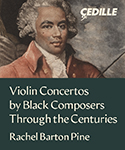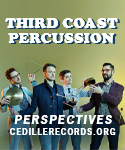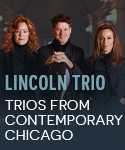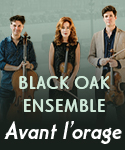The Gothenburg Symphony Orchestra (or Göteborgs Symfoniker; @GbgSymfoniker on Twitter and @goteborgssymfoniker on Instagram—our social media service; you’re welcome) has been on a two-week tour of Europe with two and a half programs and its newish, young chief conductor, Santtu-Matias Rouvali. The tour, which started in Stockholm and ends in Salzburg on March 1, is—along with their new Sibelius recording on Alpha—something of a débutante ball, a coming-out party. And where better to dance than in Vienna, their penultimate stop, where the orchestra showed up at the Konzerthaus, which is, in all manner except the fame, Europe’s Carnegie Hall.
For the program on the Vienna leg of the tour, the choice of music (out of altogether of three overtures, two concertos, and three main courses) consisted of Andrea Tarrodi’s orchestral appetizer Liguria, Kalevi Aho’s percussion concerto Sieidi, and Sibelius’ Fifth Symphony. With the concerto comes Martin Grubinger, a European phenomenon who, by turning the act of banging on instruments into a fascinating gimmick, has been milking more popularity from his profession as a percussionist than had hitherto been thought possible. What makes his shtick so enviable and attractive to presenters is the fact that he (and his humming, family-run PR machine) is tantamount to a ticket-sales insurance policy in large swaths of Germany and his native Austria. His presence can not only soften the sales-blow that otherwise occurs when programming anything of remotely contemporary nature, it can eliminate it altogether. Case in point this concert at the Konzerthaus: Jam-packed and sold out, despite a first half consisting entirely of works from the 21st century! King Midas would be jealous. And as if to make the point that the sales were indeed Grubinger-groupie fueled, something like a tenth of the audience left after intermission, skipping the Sibelius altogether.
Kalevi Aho (b. 1949) has just recently been called a “completely uninspired composer whose music is stultifying—and just gets worse as it gets on” (American Record Guide). The reviewer is entitled to his opinion and I have no problem with him expressing it bluntly. But to pretend the matter is settled with such a lazy putdown—the review consisted of nothing but that sentence—is absurd. Many more and discriminate listeners would suggest that Aho (a Boris Blacher- and Rautavaara-student who has 17 symphonies and 24 solo concertos to his name already) is one of the more interesting contemporary composers—a genuine modern yet consonant voice that cuts a swath through the cacophony of so much modern music that actually is sketchy. The concerto Sieidi makes this point, too, but only half-heartedly.
The solo part is a circus-show that starts with Grubinger dusting his hands with magnesium carbonate and strapping himself into the djembe as if he was about to free-climb Yosemite’s El Capitan. Supported by two side-drums to either side of the stage, he bangs away in an elaborate cadenza from which point he works his way from stage left to right by way of darabukka, tom-tom, small drum, Marimba, wood blocks, vibraphone, and giant tam-tam (gong)—and back again—for a full-circle effect that feels slightly contrived. Between each station, the orchestra plays vaguely nondescript, tonal, post-Shostakovichian, string-driven, and brass-accentuated episodes that thread the percussion segments (during which the orchestra moves into back-up band mode) together. Dramatic effects and general pleasantness are the rule and make it perfectly diverting—and at just over 30 minutes long it manages, just, not to overstay its welcome. Only the ending struck me as a bit corny: the soft fade-out over the drippity-drop of three rainsticks sounded like the waiting-room music in a medical marijuana treatment clinic.
A poseur of the first order, Grubinger has a face for every move and mood and all the cliché gestures down pat, basic and advanced alike, from: “this-music-is-so-good-I-can’t-help-grinning-and-shaking-my-head-to-the-rhythm” and “My-pouty-lips-signal-serious-minded-effort” all the way to “I-kneel-between-my-segments-to-project-humility” and “I-am-just-a-regular-guy-from-next-door, come-high-five-me, fellow orchestral percussionist”. It’s a damn good show if you have the tolerance for that kind of thing.
The fun-house ragtime of an encore (arranged by the much-missed percussionist great, Peter Sadlo) brought all percussionists of the orchestra plus former percussionist-cum-conductor Santtu-Matias Rouvali together for a jocund end to a first half that had started on a much more somber note with Andrea Torrodi’s (b. 1981) immediately swelling, sea-shaped introductory piece Liguria, which got right to its broader atmospheric point. Broad sheets of sound and unabashed melodic voices rising before a sparse background (“are those dentist noises?”, asked a patron sitting next to me) accompanied by gentle chatter among the woodwinds, announce boldly and with only a hint of predictability that tonality is back, baby! At 10 murmuring minutes, the emphasis on shape and sound over structure does no harm and it serves its function as a mood-setting overture very well.
For all but the card-carrying members of the Grubinger fan-club, Sibelius’ Fifth Symphony should have been the highlight, seeing that good Sibelius is hard to come by in central Europe. The Fifth is a good choice for an audience part of which still has to be won over, with it being the most typical Sibelian among Sibelius’ more conventional and the most conventional among his more typically Sibelian symphonies. Santtu-Matias Rouvali’s performance, after taking half a movement to get the coordination into ship-shape, was on the barefaced rather than introspective side; fast, sectionalized more than organic, with gorgeous woodwinds in the second movement (sounding like a big harmonica) and an effective beehive opening of the third. The splendid seesaw tension that builds in this finale was pulled off with great effectiveness and the concluding strokes were spaced with teasing, extra-long pauses between them. A particularly malleable Valse Triste with flexible tempos was a fitting encore for the Viennese audience.































